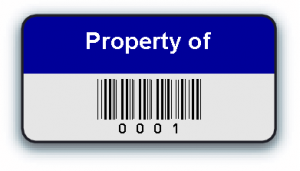Asset Tag
What is an asset tag?
Answered July 25 2019
An asset tag is an identification label that is connected to a company’s physical equipment or property. Some assets are permanent and immovable such as buildings, bolted-down machinery, and lighting systems. Other assets may be moved around a facility such as computer systems, furniture, or off-site such as vehicles, handheld tools, and repair kits.

Purpose of Asset Tags
The main reason a company tags its assets is to be able to identify what they own. This corresponds to how much money they have invested in physical property. When items are in need of maintenance or repair, asset tags indicate the location of the asset in question, as well as more detailed information that can assist technicians in completing the necessary work. CMMS software can facilitate timely and effective decision making by working hand-in-hand with an asset tagging system to provide a wealth of data.
For example, a facility tags a critical piece of equipment upon purchase. Data such as purchase price, payment terms, operations manual, and recommended maintenance schedule are entered into the CMMS. The accounting team works with the depreciation and other financial aspects of this asset while the maintenance manager must create a preventive maintenance schedule based on the suggested timetable.
Another common use of asset tags is keeping track of moveable items' locations. For instance, a maintenance team may share a variety of repair kits when called for off-site services. When a technician leaves to complete a work order, that individual scans the asset tag on the repair kit that they are taking with them. Managers then have information on which technician has which kit and where they are working. If an emergency service request arrives, it is easy to see who might be able to respond and whether they have the correct equipment.
Benefits of Asset Tags
The benefits of using asset tags are numerous. First, asset tags help companies identify, categorize, and locate assets as well as prevent theft. They also facilitate more efficient inventory management. With thorough asset tags, businesses can quickly locate the materials needed to produce or repair their products.
Many manufacturing and distribution companies need to comply with industry or government regulations. Asset tagging provides invaluable information during audits. Along the same lines, a solid asset tracking system will assist a company in the event of filing an insurance claim or determining their replacement asset value (RAV).
What is asset tracking?
Asset tracking is the means by which businesses keep tabs on their critical equipment as well as their inventory. This may include labeling technology and hardware using asset tags or barcodes. These tools work together to monitor equipment, their software, and pertinent company-specific processes.
![]()
The two main use cases for asset tracking are critical equipment and materials inventory. Critical assets must be tracked in order to know first and foremost where they are located. Then, the asset tracking system associates the equipment with technicians that have or are working it. The technicians and administrators can monitor what kind of preventive maintenance or repairs the equipment may need. Similarly, inventory must be tracked from the moment it arrives at a facility so items can be found and used in particular products or processes. Asset tracking applies to inventory throughout its life within a warehouse or on a production floor. Tracking ends when the inventory is either consumed or turned into a finished product.
Key Components
Several components are necessary to establish an effective asset tracking system. Here is a primer to get you started:
- Labeling technology. Businesses must have a way to identify assets and share work order information in a computerized system for it to be useful. Common systems for labeling are manual numbering or naming, a barcoding system, or an advanced RFID tagging system. Prices for labeling technology are dropping and increasing in capabilities, making it a smart investment for most companies.
- Computerized system. A centralized computerized system - such as a CMMS - collects, stores, and organizes high-quality data. This grants transparency to everyone from the maintenance technician to the director, allowing better and smarter decisions to be made on a day-to-day basis.
- Mobile tools. According to Supply Chain Management Review, the final frontier for asset tracking is in the far-flung remote areas. More powerful technology that can send signals farther as well as mobile devices will help improve asset tracking for equipment located off-site.
Benefits
The benefits of quality asset tracking are numerous. Companies can expect to increase efficiency, cut costs, improve maintenance, and reduce resources. Businesses may be able to reduce duplicate purchases due to lost items, grow and scale more easily, and establish more efficient processes to meet regulatory requirements.
Want to keep reading?
Asset Management
Asset Life Cycle
Fixed Asset
4,000+ COMPANIES RELY ON ASSET OPERATIONS MANAGEMENT
Leading the Way to a Better Future for Maintenance and Reliability
Your asset and equipment data doesn't belong in a silo. UpKeep makes it simple to see where everything stands, all in one place. That means less guesswork and more time to focus on what matters.

![[Review Badge] Gartner Peer Insights (Dark)](https://www.datocms-assets.com/38028/1673900494-gartner-logo-dark.png?auto=compress&fm=webp&w=336)
